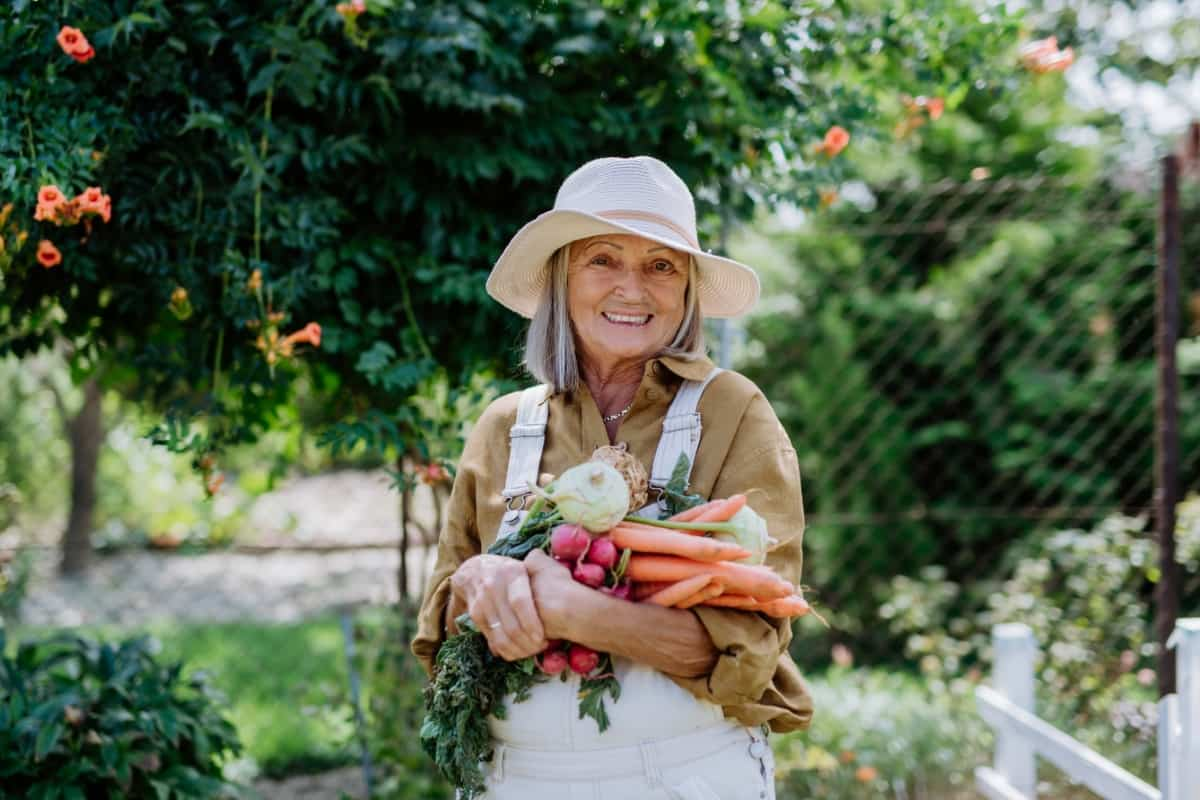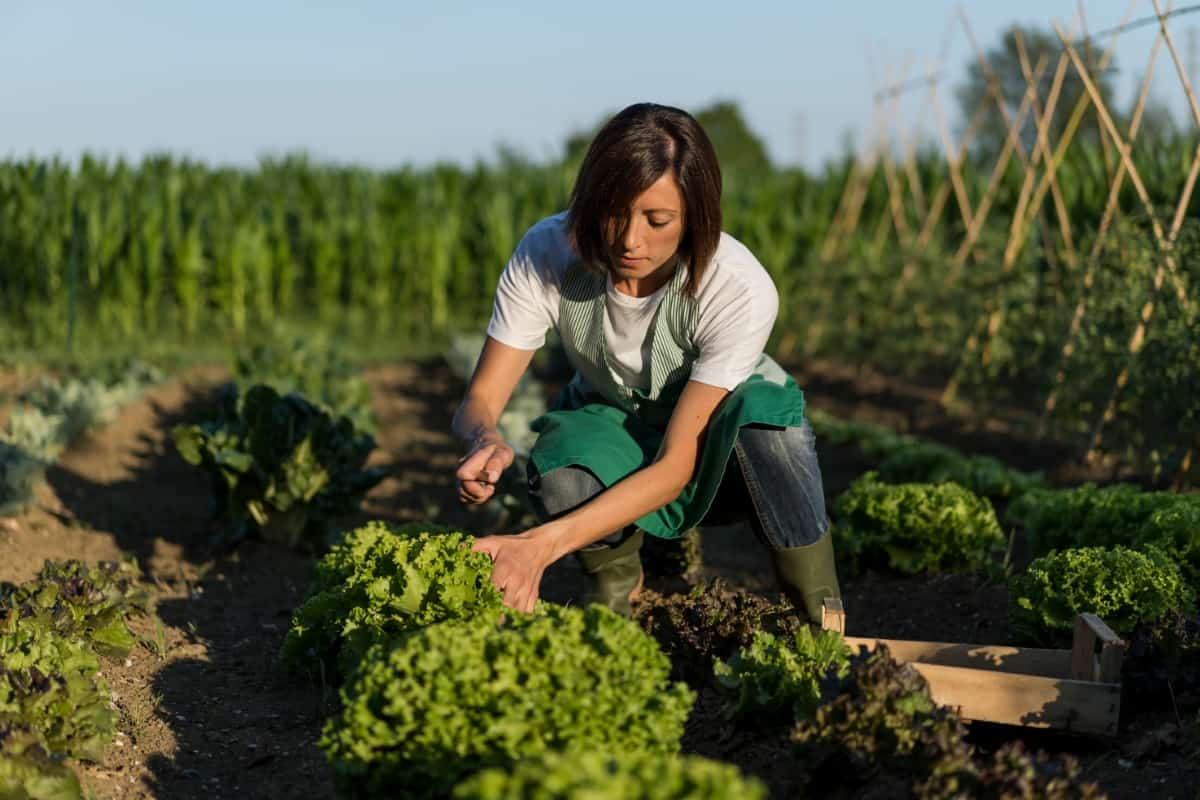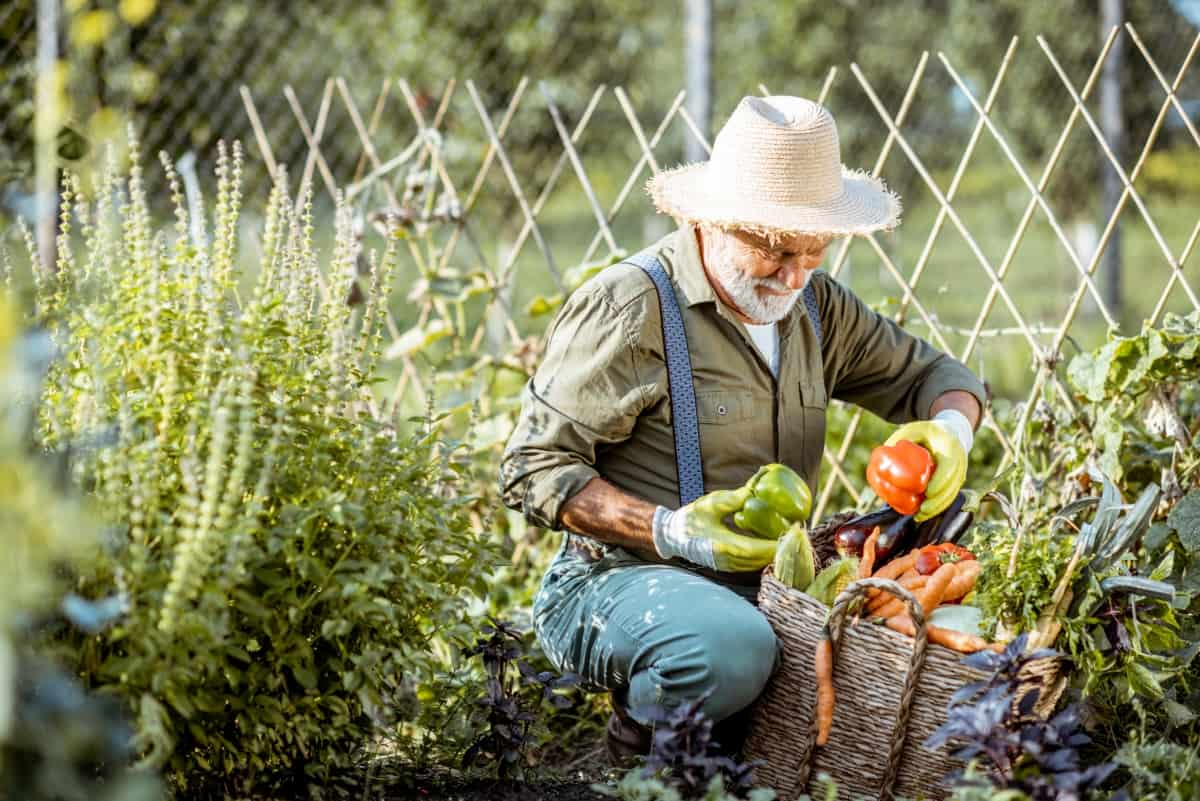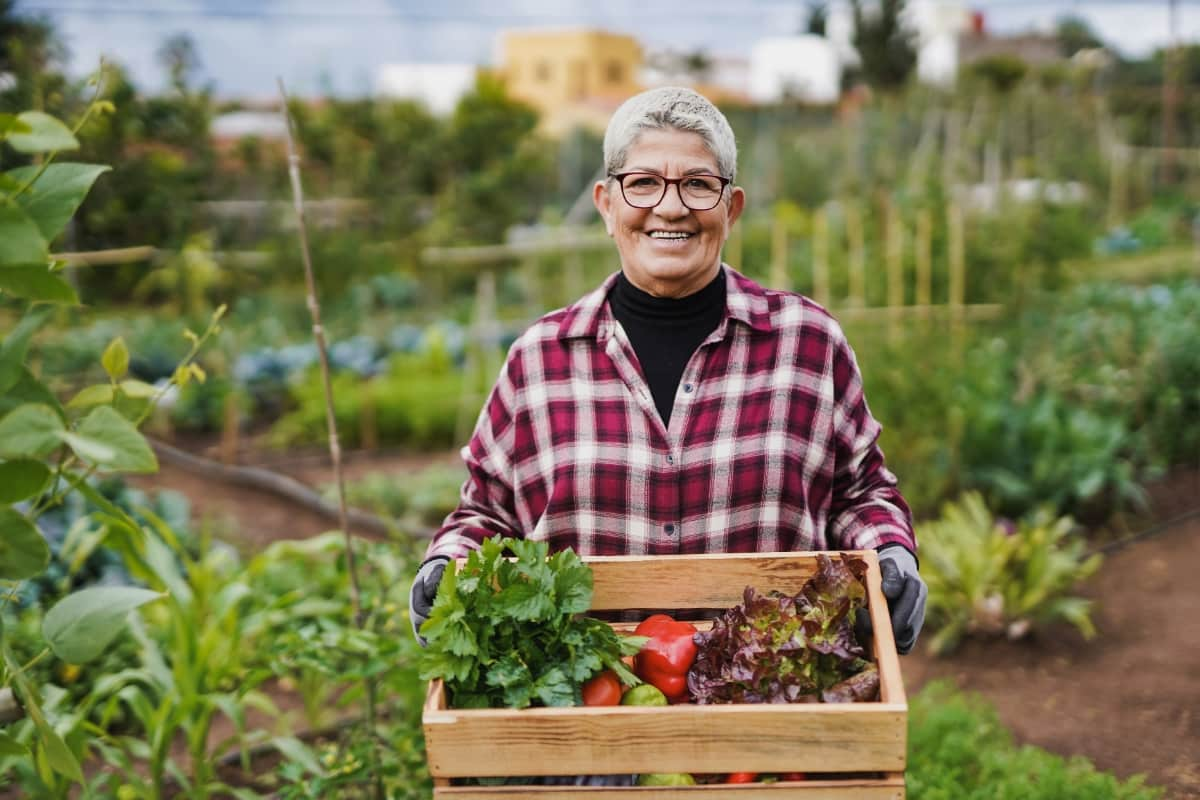With its diverse climate and fertile soil, Wisconsin provides an ideal environment for vegetable gardening. The Wisconsin vegetable gardening calendar is brimming with opportunities for sowing, tending, and harvesting various vegetables throughout the year. The growing conditions in this state are conducive to a broad range of vegetables, from the best vegetables to grow in Wisconsin to native Wisconsin vegetables. Let’s dive deep into what vegetables are easy to grow in Wisconsin, considering the state’s climate and recommended vegetables for Wisconsin’s growing conditions.

Best Vegetables for Summer Gardening in Wisconsin
Wisconsin’s warm temperatures and ample sunshine make it an excellent time to grow heat-loving vegetables during the summer months. Tomatoes, bell peppers, cucumbers, and zucchini are popular vegetables in Wisconsin in the summer. These veggies thrive in the summer warmth and produce abundant yields, making them high-yield vegetables for productive Wisconsin gardens. Equally important are sweet corn and green beans, native Wisconsin vegetables that love the heat and provide that authentic Wisconsin flavor.
Top Winter Vegetables to Grow in Wisconsin
Wisconsin’s winter can be challenging for some vegetables, but there are cold-hardy vegetables for Wisconsin that can brave the chill. Some vegetables in season in Wisconsin during winter are kale, spinach, and collard greens. These leafy greens are cold-hardy and provide nutritious additions to winter meals. Beets, carrots, and parsnips are hardy winter survivors, perfect for Wisconsin’s climate.
Spring Planting Guide for Wisconsin Vegetable Gardens
Spring is a time of renewal in the garden, and the Wisconsin vegetable gardening calendar is full of potential. Leafy greens, peas, radishes, and broccoli are excellent choices for spring planting. These vegetables are easy to grow in Wisconsin’s climate and can handle the still-cool temperatures of early spring. Moreover, they are high-yield vegetables for productive Wisconsin gardens, making them some of the recommended vegetables for Wisconsin’s growing conditions.
Hardy Vegetables for Wisconsin’s Challenging Climate
Wisconsin’s climate can challenge some plants, but several vegetables are robust enough to thrive. These include broccoli, Brussels sprouts, and cabbage, which can handle cool and warm temperatures, making them versatile additions to any Wisconsin vegetable garden. Thanks to their hardiness, these vegetables are considered some of the best for Wisconsin’s climate.
In case you missed it: How to Start Wheat Farming in Wisconsin: A Step-By-Step Production Guide for Planting to Harvest

High-Yield Vegetables for Productive Wisconsin Gardens
For gardeners looking to maximize their output, high-yield vegetables for productive Wisconsin gardens include zucchini, cucumbers, and tomatoes. These veggies produce an abundant harvest from just a few plants. Similarly, pole beans and winter squash can provide generous yields throughout their growing seasons. These vegetables and sweet corn, a native Wisconsin vegetable, can provide gardeners with plenty of produce to share or preserve.
Disease-Resistant Vegetables for Wisconsin Gardeners
Garden pests and diseases can be a significant concern for Wisconsin gardeners. Fortunately, there are disease-resistant vegetables that can thrive in Wisconsin’s climate. For example, tomatoes, beans, and cucumbers have several disease-resistant varieties recommended for Wisconsin’s growing conditions. These vegetables are easy to grow in Wisconsin and can help ensure a healthy and bountiful harvest.
Easy-To-Grow Vegetables for Beginner Gardeners in Wisconsin
Some vegetables are particularly forgiving and easy to cultivate for those just getting started with gardening. Lettuce, radishes, and green beans are easy-to-grow vegetables for beginner gardeners in Wisconsin. These plants adapt well to Wisconsin’s climate and are fast-growing, providing a quick and satisfying reward for beginner gardeners.
Native and Heirloom Vegetables for Authentic Wisconsin Flavors
Embracing native and heirloom vegetables can bring a sense of place and tradition to your garden. These include sweet corn, peas, and winter squash that have been cultivated in Wisconsin for generations. These native Wisconsin vegetables are known for their hardiness, productivity, and authentic Wisconsin flavors.
In case you missed it: How to Start Potato Farming in Wisconsin: A Step-By-Step Production Guide for Planting to Harvest

Easy and Best Vegetables to Grow in Wisconsin: Planting Guide for Summer, Winter, and Spring
| Month | Task | Vegetables |
| January | Start planning your garden, browsing seed catalogs, and ordering seeds. | – |
| February | Start seeds indoors for cool-season crops. | Broccoli, Cabbage, Lettuce |
| March | Plant hardy vegetables outdoors. | Peas, Spinach, Kale |
| April | Transplant seedlings outdoors and plant root vegetables. | Broccoli, Cabbage, Lettuce, Potatoes, Onions |
| May | Plant most of your crops and continue transplanting seedlings outdoors. | Tomatoes, Peppers, Cucumbers, Summer Squash |
| June | Maintain your garden; early crops may be ready to harvest. | Radishes, Spinach |
| July | Continue with garden maintenance; many vegetables should start to be ready for harvest. | Tomatoes, Peppers, Cucumbers |
| August | Prime harvesting month for many vegetables, start planting fall crops. | Tomatoes, Peppers, Cucumbers, Broccoli, Cabbage, Lettuce |
| September | Harvest remaining summer crops, plant garlic for next year, and continue planting cool-season crops for fall and winter harvest. | Garlic, Broccoli, Cabbage, Lettuce |
| October | Harvest fall crops, and start winterizing your garden. | Broccoli, Cabbage, Lettuce |
| November | Wrap up any remaining harvesting, protect any remaining plants from frost, and continue winterizing tasks. | – |
| December | Plan for next year’s garden; start some herbs indoors for a winter windowsill garden. | Various Herbs |
Preparing Your Garden Beds for Planting
As the Wisconsin Month-by-month Vegetable Gardening Calendar begins to unfold and the weather starts to warm, gardeners in Wisconsin are presented with a perfect opportunity to prepare their garden beds for planting. This preparation typically includes clearing out any leftover debris from previous seasons, turning the soil to promote aeration, and adding organic matter to enrich the soil.
Compost or well-rotted manure enhances soil fertility and structure, fostering robust plant growth. Additionally, lime adjusts soil pH upward, while sulfur reduces it. This careful preparation is vital in creating a conducive environment for the growth and development of vegetables, whether they’re the popular vegetables to grow in Wisconsin, native Wisconsin vegetables, or the best vegetables for Wisconsin’s climate.
Caring for Your Vegetables Throughout the Growing Season
Once your vegetables have been planted according to the Wisconsin vegetable gardening calendar and the recommended vegetables for Wisconsin’s growing conditions, regular care is key to a bountiful harvest. This care often includes watering, weeding, fertilizing, and pest control. When watering, it’s important to water deeply and infrequently rather than shallowly and often.
In case you missed it: How to Start Corn Farming in Wisconsin: A Step-By-Step Production Guide for Planting to Harvest

This encourages the development of deep root systems, which help plants withstand dry conditions. Weeding is another critical task, as weeds compete with your vegetables for resources. Regular weeding can help ensure your vegetables get the nutrients, water, and sunlight they need. Fertilizing can also play a significant role in the success of your vegetable garden.
Conclusion
Whether you’re a beginner or a seasoned gardener, following the Wisconsin vegetable gardening calendar and being mindful of the recommended vegetables for Wisconsin’s growing conditions can help ensure a successful harvest. Whether you’re a beginner or a seasoned gardener, following the Wisconsin vegetable gardening calendar and being mindful of the recommended vegetables for Wisconsin’s growing conditions can help ensure a successful harvest.
- Feed Your Flock for Less: Top 10 Tips to Save on Chicken Feed
- Ultimate Guide to Ossabaw Island Hog: Breeding, Raising, Diet, and Care
- Hatching Answers: The Top 10 Reasons Your Chickens Aren’t Laying Eggs
- Eggs and Economics: Breaking Down the Cost of Raising Backyard Chickens
- Defend Your Greens: Proven Methods to Keep Iguanas Out of Your Garden
- Ultimate Guide to Cinnamon Queen Chicken: A Comprehensive Guide for Beginners
- Ultimate Guide to California Tan Chicken: Breeding, Raising, Diet, Egg-Production and Care
- Ultimate Guide to Marsh Daisy Chicken: Breeding, Raising, Diet, and Care
- 10 Types of Chicken Farming Businesses You Can Start for Profits